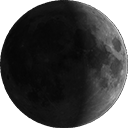Exoplanets (planets of stars other than our own sun) are very exciting for scientists, especially when they are similar to our own earth, because they could teach us a lot about the formation of our planet. Keep reading if you are curious and want to know more about these incredible planets.
The NASA mission Kepler recently discovered two systems in which three Earth like planets are located.
The two planetary systems are Kepler-62 and Kepler-69. Kepler-62 has five planets: 62b, 62c, 62d, 62e and 62f. The Kepler-69 system has two planets: 69b and 69c. Kepler-62e, 62f and 69c are the habitable-zone “super Earths.”
More exoplanets are located regularly and scientists are always revising their estimations regarding the number of exoplanets present in the universe. We once thought that the Earth was a unique occurrence but the number of exoplanets present in the universe is absolutely staggering.
A planet is considered as similar to Earth if it presents a few criteria. First of all, the planet should be solid. Exoplanets are typically much smaller than gas giants such as Saturn or Jupiter and are made from rocks and ice. The presence of water has not been proven on any exoplanet yet but scientists are not excluding this possibility.
The latest exoplanets discovered during NASA’s Kepler mission are much larger than Earth. These planets are between forty and seventy percent larger than Earth but this difference does not mean much in term of planetology since the size of some gas giants and other types of planets does not even compare to these exoplanets.
An atmosphere is another criteria scientists look for in Earth like planets. A planet with an atmosphere is shielded from meteors and life would in theory be possible thanks to the presence of gas such as hydrogen, helium or oxygen. A planet with an atmosphere could also have some meteorological phenomenons such as rain.
The planet is considered in the habitable zone if the temperatures on it could be similar to the climates we have on Earth, which is possible if a planet is located at the right distance from its sun. This “ideal” zone corresponds to the zone where a planet could possibly have liquid water.
Finding a planet similar to Earth does not mean finding life on another planet. These planets are considered as likely to hold life because thy are similar to Earth. However, scientists are still unsure of what triggers the apparition of life on a planet. Exoplanets in the so called “habitable zone” could in theory hold life but there is no way of knowing whether or not life actually appeared on these planets.
The Kepler mission and other similar scientific projects can detect exoplanets by looking at the amount of light a planet blocks when it passes between its star and the telescope used to observe it. The brightness of the star observed slightly diminishes as the exoplanet passes, which allows scientists to assess its size and its distance to the star.
Exoplanets are very difficult to detect because their smaller size and their position in the habitable zone causes them to have a longer orbit. An advanced telescope can detect an exoplanet if it is pointed at a specific star at the right season. Scientists can more easily detect larger planets located closer to their star since these celestial bodies have a much shorter orbit and create a more noticeable distortion in the light of their star as they pass by.
There is a lot we do not know about exoplanets. Scientists are regularly finding new planets very similar to Earth and yet have no way of knowing if these planets have a breathable atmosphere or liquid water. NASA and other similar organizations all over the world are investing tremendous resources in studying these planets to better understand how Earth was formed, find out where life came from or what kind of conditions trigger its appearance.
Even though we are still years away from observing these planets more closely and decades away from perhaps sending probes, exoplanets are very exciting discoveries. Science is progressing very quickly since we recently thought that Earth was a unique occurrence and now scientists believe that every system could have a few planets located in the habitable zone. We will learn more over the next few years as scientists look for more planets and try discovering more things about the exoplanets who have already detected.
More information about the Kepler mission: http://www.nasa.gov/kepler

